
The traditional luau is one of many ways that pork has been cooked underground for years. When it comes to backyard party cooking, there are few things as impressive as digging up a perfectly cooked roast of pork with all the trimmings. It's just plain fun for everyone in the family to pitch in, and many hands make light work. Call it whatever you like -- caveman cooking, Hawaiian cooking or underground cooking -- but pork cooked underground has a flavor and attitude all its own.
The Oven
Ground ovens are among the most simple of cooking devices. The hardest part of the process is digging the hole. Fortunately, most kids excel at digging up the yard. Start your cooking project the day before you plan to cook. Dig an outline in the yard, give the kids shovels and let them dig to their hearts' content. To you, it's a lot of hard work. To them, they're having fun doing what kids love to do.
The Heat
Line the bottom of the pit with a layer of large rocks. Build up the fire at least two hours before you plan to start cooking. Make a big, roaring fire on top of the rocks and keep adding more wood for an hour. Use larger logs instead of smaller sticks. Let the fire burn hot for about one hour, then allow it to burn down for another hour. You should have coals at this point. Rake the coals around the bottom of the hole to form a hot base for your cooking.
The Food
Roast pork is wonderful cooked underground, because it steams and bakes without drying out. Don't waste the process by only cooking the pork. Add traditional luau foods, such as whole sweet potatoes, white potatoes and cobs of corn. Throw in other foods that go well with pork such as apples, cabbage or carrots. Pile handfuls of herbs over the food in a big package or sprinkle the surface of smaller packages with flavor ingredients such as lemon pepper, hickory smoke flavoring, salad dressing mix or brown sugar.
The Process
Cooking pork underground traditionally involved wrapping food in leaves and burying it. Today's methods are a little less likely to include dirt with your meal. Wrap all the food in double layers of heavy-duty foil, and lay a grate from a barbecue over the coals to provide a surface on which to pile the food. Pour about 1 quart of water over the coals and hot rocks to create steam. Pile on corn husks as a clean base and add the foil-wrapped packages of food. Cover the food with a tarp and bury it with the soil dug out of the pit. Walk away and don't worry about the pit for two to three hours. When it's time to serve dinner, dig up the pit and remove the foil packets of food.
Related Articles

How to Cook Ribs Over an Open Pit
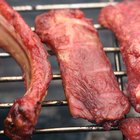
How to Smoke Food With Cedar Chips
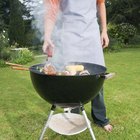
How Do I Start a Mesquite Wood BBQ?

How to Cook a Brisket in the Ground

How to Slow-Cook a Pork Roast in a Pot ...

How to Use Wood Chips in a Smoker
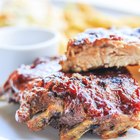
How to Use Camp Chef Smoke Vault

How to Cook Lechon
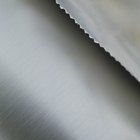
How to Cook Foil Packs in the Oven

How to Boil Ziploc Bags
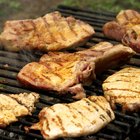
How to Smoke Pork on a Gas Grill

How to Reuse Cedar Cooking Planks

How to Cook Hog Maws

Monopoly Theme Party Ideas
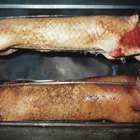
Cooking Times for Smoking Meat in an ...

How to Mix Wet Wood & Charcoal for a ...

How to Smoke a Brisket With an Offset ...
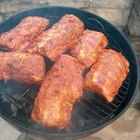
How to Smoke Ribs With a Gas Smoker

What California Beaches Have Fire Pits

How to Cook Foil Packs in the Oven
References
Writer Bio
Working in sunny Florida, Anne Baley has been writing professionally since 2009. Her home and lifestyle articles have been seen on Coldwell Banker and Gardening Know How. Baley has published a series of books teaching how to live a frugal life with style and panache.
Photo Credits
Hemera Technologies/AbleStock.com/Getty Images